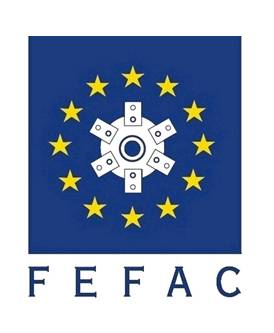

FEFAC European Feed Manufacturers' Federation
FEFAC Tools & Actions to Support Mainstream Market Transition of Responsible Soy
With its Soy Sourcing Guidelines, FEFAC wants to facilitate mainstream market supply for soy which is produced in accordance with baseline social and environmental criteria. In addition, FEFAC aims to provide transparent information on existing initiatives on responsible soy via a benchmark, and to raise awareness about the need for chain cooperation to facilitate market transformation.
Status of the Guidelines. The Sourcing Guidelines are a professional recommendation. Individual companies are to take the final decision on the sourcing of their soy products and whether they are buying them in accordance with the guidelines or not.
Items covered in the Guidelines. The FEFAC Sourcing Guidelines are not a new standard, but list a number of social and environmental issues that must be addressed by soy programs or standards. The FEFAC Soy Sourcing Guidelines cover six principles. Each principle is subdivided into a number of concrete criteria. A distinction is made between essential criteria and desired criteria. All essential criteria and at least five desired criteria have to be included in soy programmes or standards in order to be in compliance with the FEFAC Soy Sourcing Guidelines. Over time, the ambition level of the guidelines will increase in relation with the realized volume of soy sourced in accordance with the Guidelines.
Verification. FEFAC has not only listed a number of social and environmental items that have to be addressed in soy programmes or schemes, but also a number of verification requirements to ensure a reasonable certainty that these criteria are indeed met in practice. With its verification requirements, FEFAC will not only focus on certification whereby an independent third party audits all farmers; it also wants to allow for other approaches including first and second party verification. However, FEFAC does require the presence of an accredited independent third party in such situations to check whether the internal control system or other verification mechanism is likely to lead to credible results (in other words: that the farmers do indeed meet all criteria).
Chain of custody. FEFAC has not included any requirements for the chain of custody in its guidelines because this is beyond the scope and mandate of FEFAC. However, FEFAC considers it important to stress that eventually a mainstream transition towards responsible soy can only be arranged in the physical supply chain in close cooperation with all supply chain partners. This means that in the longer term area mass balance and mass balance should be considered as preferred supply chain models.
Although FEFAC understands and acknowledges the importance of the Book & Claim supply chain model to raise demand for and production of responsible soy in the short term, it wants to emphasize that there should always be a clear link between the sourcing country and the efforts of market parties to make soy production more responsible. FEFAC considers it undesirable when certificates are bought from farmers in one country in order to use the sustainability claim for soy from another country. Therefore it is strongly recommended to buy physical soy from the same country as where the Book & Claim certificates are issued.
The European Feed Manufacturers’ Federation (FEFAC) aims to support the development of a mainstream market supply of responsible soy used in European feed production. In August 2015, FEFAC launched its Soy Sourcing Guidelines to define a baseline level for what the European feed industry considers to qualify as responsible soy. The Guidelines are not a responsible soy certification standard, but rather a means to facilitate market transparency.
Benchmarking possibility for existing scheme owners
Responsible soy scheme owners are invited to have their programme benchmarked against the FEFAC Soy Sourcing Guidelines to determine their compliance with the European feed industry requirements. This webpage allows owners of standards for responsible soy to firstly self-assess their compliance. For official recognition and a display of the respective logo on this webpage, the responsible soy standard owner subsequently needs to apply for the formal benchmark. Under the “detailed results” button in-depth information can be found about the soy standards and programmes that are already in the ITC Standards Map.
Download the Guidance document
In May 2019, FEFAC and the International Trade Centre (ITC) created the possibility on this webpage for feed companies & national associations to state their voluntary commitment to sourcing responsibly produced soy products. As part of their commitment, feed companies agree to take specific actions to ensure that by 2025 the soy used in compound feed manufacturing, from home-grown and imported origins, meets criteria laid down in the FEFAC Soy Sourcing Guidelines. Below, the Declaration with signatory list can be downloaded.
Download Responsible Sourcing Declaration and Signatory List
Do you want to compare the standards in more details ?
Add a strong one liner supporting the heading above and giving users a reason to click on the button below.
Use the toolLogos of schemes that pass the benchmark and are in compliance with the requirements of the FEFAC Guidelines are visible on the homepage of the tool. The infrastructure provided by the T4SD team, combined with FEFAC’s guidelines, contributes to the transition towards a mainstream supply of responsibly produced soy.
Supported by:
